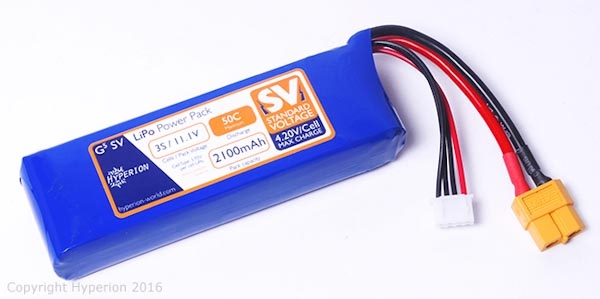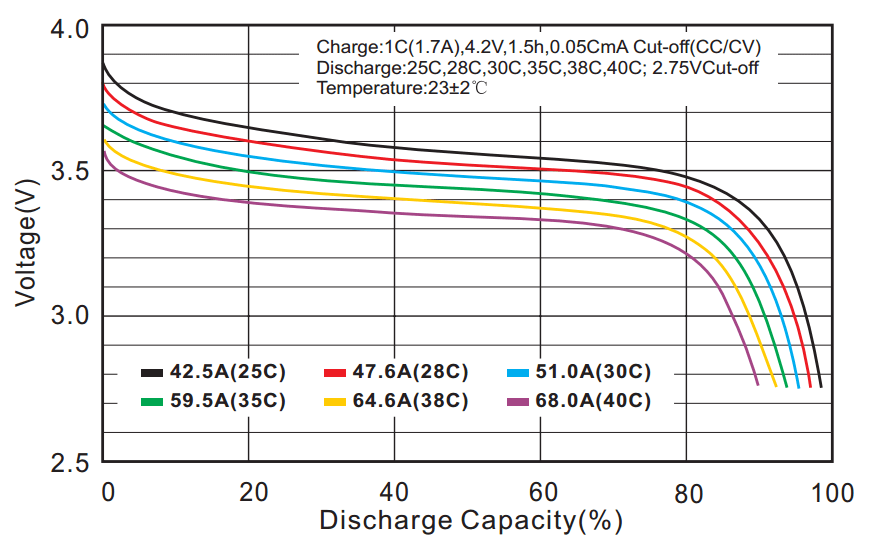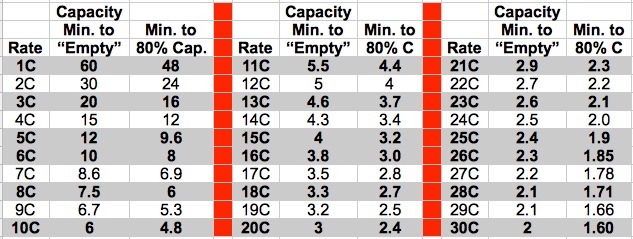 |
Flying High With Electric Power!
The Ampeer ON-LINE!
Fly the Future - Fly Electric! |
|---|
Site Table of Contents
| President: | Vice-President: | Secretary-Treasurer: |
| Ken Myers | Richard Utkan | Rick Sawicki |
| 1911 Bradshaw Ct. | 240 Cabinet | 5089 Ledgewood Ct. W. |
| Commerce Twp., MI 48390 | Milford, MI 48381 | Commerce Twp., MI 48382 |
| (248) 669-8124 | (248) 685-1705 | (2480 685-7056 |
 | ||
| Board of Directors: | Board of Directors: | Ampeer Editor |
| David Stacer | Arthur Deane | Ken Myers |
| 16575 Brooklane Blvd. | 21690 Bedford Dr. | 1911 Bradshaw Ct. |
| Northville, MI 48168 | Northville, MI 48167 | Commerce Twp., MI 48390 |
| (248) 924-2324 | (248) 348-2058 | (248) 669-8124 |
| The Next Meeting: Date: Wednesday, March 14 Time: 7:30 p.m.
Place: Ken Myers' house | ||
| Upcoming Keith Shaw Birthday Party Electric Fly-in 2018 Dave Grife announces the annual Keith Shaw Birthday Electric Fly-in. | Upcoming Skymasters' Electric Night Fly and Fly-in Pete Foss announces the dates for this upcoming event. |
| The Ampeer Celebrates its 31st Year Happy Birthday AMPEER. | Fore and Aft Balance: Initial Safe Center of Gravity (ISCG) Updated Ken announces an update to his CG article. |
| Reading and Understanding LiPo Labels and Specifications Ken details how to understand and use the information provided on a LiPo battery label and its specification data | Upcoming 34th Annual Mid-America Electric Flies 2018 Info on this upcoming annual event. |
From Contest Director (CD) Dave Grife via Email The Balsa Butchers are hosting the "Keith Shaw Birthday Party Electric Fly-In", for the 17th year, at their field near Coldwater, MI. The event takes place on Saturday, June 2, 2018. It is a one day event again this year. The event consists of Open Electric Flying with a "Special Guest of Honor Theme", Happy Birthday Keith Shaw. Enjoy a day with the "Pioneering Master of Electric R/C Flight". 8 am - 5 pm, Saturday. New this year, NO LANDING FEE! Donations for field maintenance and lunch appreciated. For additional information contact;
The field will be open for guests to fly on Sunday as well. 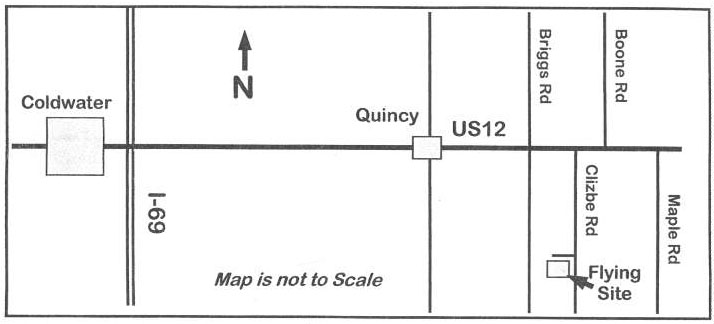 Directions: Quincy is approximately 4.5 miles east of I-69. Clizbe Road is approximately 1.6 miles east of Quincy. The Flying site is approximately 1.5 miles south of US-12 on the west side of Clizbe Road. Skymasters' Electric Night Fly and Fly-in
The Skymasters' Annual Electric Night fly will be held on Saturday, June 9 and the electric fly-in is on Sunday, June 10. More details will follow when they become available. The Ampeer Celebrates its 31st Year This is the 31st year of the Ampeer electric flight newsletter. The very first issue was named the Wolf's Call, as Ken's proposed name for the group was West Oakland 'Lectric Flyers. The EFO founding members included; Dan Behrend, John Burt, Keith Clark, Jerry Guest, Jeff Hauser, Jack Lemon, Jr., Debbie McNeely, Ken Myers, Jim Northmore, John Revello, Richard Utkan, Jack Violes and Gus Wickland. Ken Myers has continued as president and newsletter editor since the founding and Richard Utkan, the vice-president, has also held that position since the club's founding.  The complete 1st issue can be found here. Fore and Aft Balance: Initial Safe Center of Gravity (ISCG) Updated The article was updated on January 12, 2018. The updates include; electronic device cross-platform formatting, URL link updates, video link updates, and some corrections and clarifications. Reading and Understanding LiPo Labels and Specifications
The Label: The G5, at the top left of the label, indicates that it is a 5th Generation Hyperion brand LiPo battery. The SV, at the upper left and right indicate that it is a Standard Voltage type. There are High Voltage (HV) LiPo batteries, with a charge termination voltage of 4.35V/cell. The 4.20V/Cell Max Charge, under the SV on the right side of the label, indicates that it is to be charged to a termination voltage of 4.20V per cell. Again, this indicates that this is a SV LiPo and not a HV LiPo. The 3S/11.1V indicates that the battery is 3 cells connected in series (S) and that it has a nominal voltage of 11.1V. The 11.1 is not a cardinal number, it is a nominal number, a number that names something. It has no useful numeric value. Each SV LiPo cell is said to have a nominal (naming) value of 3.7V per cell, therefore, three cells in series is the sum of three nominal 3.7V cells. All that the notation of 3S/11.1V is doing is confirming that this is a 3 cell in series SV LiPo battery. It should be noted that some chargers also display a similar notation on a 'confirmation' screen before the charger can be started by the user when balance charging. 50C Maximum states the manufacturer's maximum recommended discharge rate. 2100mAh is the manufacturer's stated capacity. For almost all of our electrically powered flight systems, we measure the current in amps (A), not milliamps (mA). That becomes relevant when discussing capacity, charge rates and discharge rates. The following specifications were cut and pasted directly from the supplier's Web site for this battery. Hyperion G5 50C Max - 2100mah 3S Lipo
Hyperion G5 50C Max - 2100mah 3S Lipo Specifications: Capacity: 2100mah (should be mAh) The manufacturer's stated battery capacity is based on a constant current load that they say is required to take a cell/battery from 'full volts (V)' to 'empty volts (V)' in one hour. Full voltage for a Standard Voltage LiPo cell is usually stated as 4.20V per cell, as noted on the label. Therefore, a pack with 3 cells in series (3S) has a stated voltage 3 times 4.20V. That is 12.60V for the 3S example pack. Empty voltage for a Standard Voltage LiPo cell is usually given as 3.00V per cell. A pack with 3 cells in series (3S) has a voltage 3 times 3.00V or 9.00V for the 3S example pack. Even though the pack's actual 'capacity', stated as a constant load current per hour, to go from 'full V' to 'empty V', varies with the constant load current, the value is treated as a constant. The manufacturer is saying that when a constant load of 2100 milliamps (mA) is placed on this pack for 1 hour the voltage drops from 'full V' to 'empty V'. It is somewhat difficult for us to 'think' in milliamps. A milliamp (mA) is one thousandth of an amp. "To 'think' in amps, divide milliamps (mA) by 1000. 2100milliamps (mA) / 1000 = 2.1 amps (A) When amps (A) are used as the unit, the previous statement is easier to comprehend. The manufacturer is saying that when a constant load of 2.1 amps (A) is placed on this pack for 1 hour the voltage drops from 'full V' to 'empty V'. Capacity is measured by the manufacturer to a certain standard. "By international standard, all cells are rated for capacity at 0.2C, where C = nominal capacity of the cell when discharged at a rate equal to 0.2 times the predicted capacity for the cell. The rated cell capacity is actually statistically established since the actual is not known until tested."
Is this a chicken and egg statement? 0.2C for this pack is 0.42A per hour. That's right, 42 hundredths of an amp. Usable Capacity Based on Discharge Rates
"The discharge curves show the effective capacity of the cell is reduced if the cell is discharged at very high rates (or conversely increased with low discharge rates). This is called the capacity offset."
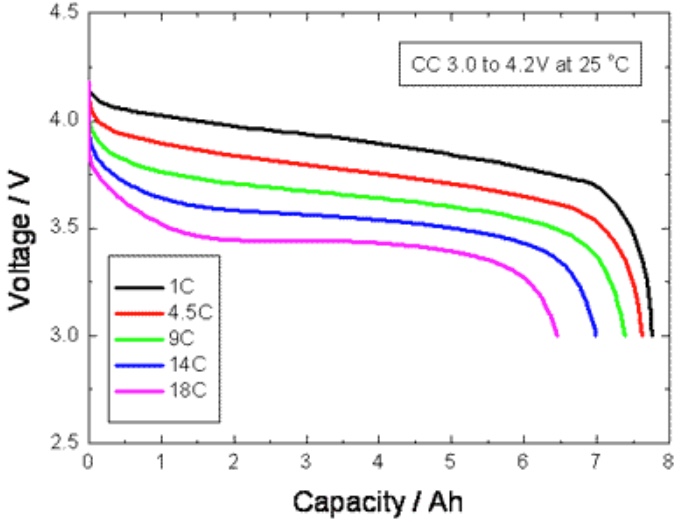 The graph illustrates why no more than 80% of the stated capacity should be removed from a battery. It is important to remember that the actual battery capacity diminishes over time. Again, the capacity we use in practice is how much usable capacity the manufacturer says the battery 'holds' - 2.1A for an hour for the example. DO NOT MISTAKE charge and discharge rates with the capacity, since they are in the same units. Rates vary. Capacity is 'considered' to be, and used as, a constant. Next on the specification list is Nominal Voltage:
This confuses many beginners. It is NOT a cardinal voltage. Why they list it as 'Voltage' is unknown. The 3S, 3 cells in series, was already stated in the nomenclature for the pack. It is redundant information. 11.1V nominal is not a cardinal number, it is a nominal number that names something. It is just another way to note that this pack is a 3S LiPo. It is redundant information, and a bit confusing. As previously noted, 3S 11.1V is sometimes noted on a confirmation screen of a charger, so it might be useful in that situation. Charge termination voltage is more important and NOT listed in the specifications. It should be;
A rate is some type of unit for a time period; mph, gallons per minute, amps (A) per hour (h) = (Ah). For rechargeable batteries, the charge and discharge rate is stated as a factor times the capacity, which also happens to be a rate. When dealing with charge and discharge rates, it is best to use capacity in amp hours (Ah) or amps per hour or amps/hour. From the example battery specifications -
In theory, that discharge rate is 50 times higher than the rate used to identify the capacity of the battery. In theory, this rate will "empty" the battery 50 times faster. The constant load amps to achieve the 50C rate is 105A; 50 times 2.1A. What does 'Burst' mean? Typically it means something of short duration, but how short is short? 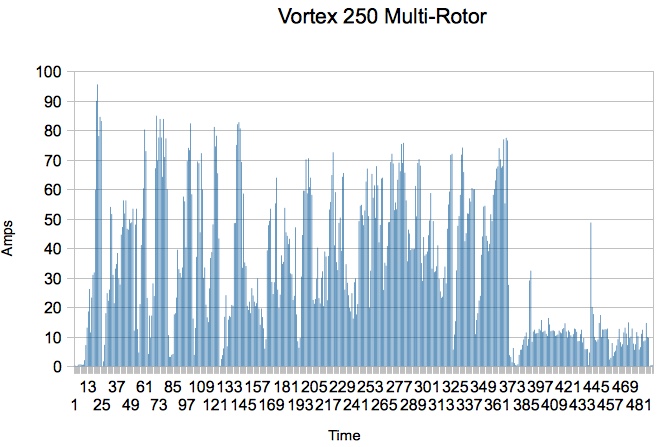 The graph shows the amp draw over a 1 minute 47 second flight of a Vortex 250 multi-rotor. The pack was a Turnigy Graphene 4S 1300mAh 65C cont./Burst 130C LiPo. The highest recorded amp draw was 95.5A. That is a discharge rate of 73C, which is well under the stated 130C. The average amp draw for the flight was 35.1A. That yields an average of 27C for the discharge rate. The stated burst amps value might be useful to rotor-craft pilots with telemetry or onboard data recorders including data recording ESCs. It is not generally too useful for plane pilots. Stating high C-rate numbers are great hyperbole for the company's advertising department. From the example battery specifications - (25~30C continuous). The ~ symbol means about. It's not a - which means through. Why is a range stated? The note on the specifications reads, "CMax = Continuous C-Rate for 100% rated capacity delivery is 1/2 C-Max rate." In theory, a constant current equal to the Maximum Continuous Amps, 52.5A, would only last 1 min. 55 sec. from 'full' to the 80% recommended capacity used. On average, a 4 minute flight on this pack, which is pretty aggressive for electrically powered model airplanes, from 'full' to exactly 80% of the manufacturer's stated capacity used: 1.68Ah (80% capacity) * 60 minutes = 100.8 A minutes / 4 minutes = 25.2A, 12C, as the flight average amp draw. From the example battery specifications -
For the rest of the specifications with grams and mm changed to Imperial Units, they could now be understood to mean;
The numbers on the table are "in theory" numbers when a constant load is applied to go from the manufacturer's full stated capacity to 80% of that capacity. They can also represent the average C-rate over that time period. Example numbers are in parentheses. Time the flight (6 min. 12 sec. or 6.2 min.)
This a question that maybe Ampeer readers can answer, I can't. Many electrically powered sport, sport scale and trainer planes typically fly about a 6 minute flight. With a 6 minute flight to 80% of the manufacturer's stated capacity averaging between 8C and 7C, how are users reportedly puffing so many LiPo packs on a 6 minute flight? This company chose not to state the discharge wire AWG (wire gauge size). It is important. The suggested continuous current amps should determine the required power wire size. It is not unusual to find power leads with too small of a wire gauge used on power leads compared to the advertised maximum continuous current. Unfortunately, wire gauge usage size is a debatable topic. Lucien Miller, of Innov8tive Designs, suggested in a post on RC Groups, that for our purposes, "in RC applications, we can use 100 circular mils per amp or even 75 circular mils per amp..." "The size of the wire depends on 2 things, the actual application and the length of the wire." 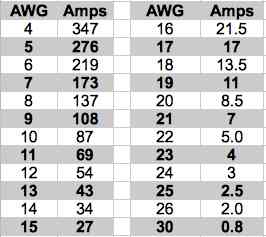 I created a table using a conservative 120 circular mils per amp, as he later 'hinted at' in his post when he finished by noting, "Based on 100 circular mils per amp, our 50 amp case needs 5000 circular mils of wire, which is equal to a 13 gauge wire. To be on the safe side, I would step that up to a 12 gauge wire which has 6,530 circular mils, and would provide 130.6 circular mils per amp." My table is NOT in agreement with Progressive RC's amperage recommendations for their silicone multi-strand wire.
After much searching, I found that the power lead wire on the Hyperion G5 2100mAh 3S LiPo is 14AWG.
Never discharge lower than 80% of the manufacturer's stated capacity. LiPo batteries deteriorate rapidly when left at full charge - store at storage voltage. Always balance charge when charging a LiPo. Charge in an area where a possible fire and and huge volumes of smoke won't be a problem. The user MUST be in the immediate charging area in case of a charging 'incident'. A means of containing and extinguishing a fire should be on hand in the LiPo charging area. Chargers use a constant current (CC) constant voltage (CV) profile (CCCV) when balance charging Li-xx batteries. For Li-xx batteries, charge current, set on the charger, is 'feed in' until the charger detects 4.2V per cell. It then switches to a constant voltage with the charger voltage at 4.2V and stays there while the current decreases. Once the current decreases to a specified amount, the charger signals that the balance charge is completed. (simplified) Revolectrix has added a new algorithm called "Ioniq profile" to the Gt chargers. It alters the current during the switch from CC to CV stage to reduce cell damage for HV LiPos. Keep in mind that packs to be used soon are, more often than not, charged from a storage state of about 50% charged, not 'empty'. Charger Revo Gt500 Pk Dinogy 3S 1000mAh
1C 35 min. 39 sec. From 11.46V (3.819V, 3.823V, 3.824V) 485mAh returned to pack 12.6W Required 3C 12 min. 49 sec. From 11.45V (3.818V, 3.818V, 3.819V) 472mAh returned to pack 37.8W Required 5C 8 min. 22 sec. From 11.45V (3.816V, 3.817V, 3.818V) 470mAh returned to pack 63W Required After the charge termination at 12.6V, or 4.2V per cell, the charge termination voltage drops toward the stabilized open circuit voltage (OCV) as the pack 'settles' down from its excited state. The voltage drop for the 1C rate charge was very minimal. It stabilized, in a couple of hours, to an open circuit voltage (OCV) of about 4.195V per cell. The pack charged at 3C reached a stabilize OCV of about 4.190V per cell. The pack charged at 5C reached a stabilize OCV of about 4.185V per cell. The percent (%) of the total charge time spent in the constant voltage (CV) stage increased with the charge rate. For the first charge of the day, I use a 1C charge rate for my 3S 1000mAh packs, but I charge 4 packs in parallel at a time. The required charging power is 4 amps * 12.6V = 50.4W to the end of the CC phase. That is no sweat for my Revolectrix Gt500. A 50W AC/DC charger could almost do it in the same time, but not quite. If I do charge at the field, I use a 2C (2A) charge on these 'small' packs, but I seldom charge them at the flying field. 2 of the 3S 2100mAh Hyperion batteries for a Morning Charge Before Flying
Again, a 50W charger would just about do it. The fastest charge at flying field for 50W charger:
If the pack was at an 80% discharged state 1.68Ah * 60 minutes = 100.8 amp minutes / 3.97A = 25.4 minutes is suggested. The actual charge time will be much longer because of the CV phase and continued balancing. At a 1C rate, 1 amp, 485mAh was returned to the Dinogy 3S 1000mAh pack mentioned in the A Charge Rate Test section.
There are too many variables involved to suggest how much longer it will take to charge a pack at a given C-rate, but it will take longer than suggested by the simple C-rate time. I would charge it at 3C (6.3A) at the flying field.
For these packs, and all 3S 2000mAh to 2200mAh, a minimum of an 80W output charger would be okay. The 3S 2000mAh to 3S 2200mAh are a popular size. They are used, and supplied, in the Hobbico Sensei Trainer and the Horizon Hobby Timber. Tower Hobbies 'recommends' a Duratrax Li-24 30W 2S-4S AC Balancing Charger Star for the Sensei battery. The Prophet Sport Plus 50W AC/DC Charger (DYNC2010CA) is recommended for the Timber battery. What do you think, based on the data for the Hyperion 3S 2100mAh battery? Both the BNF and RTF versions of this plane come with a 30W 2S-3S LiPo charger. The provided LiPo pack is 3S 3200mAh (3.2Ah) battery.
If the pack were flown to 80% of its capacity (2.56Ah) then 2.56Ah * 60 minutes = 153.6 amp (A) minutes.
What do you think? Charger Required Output Power
For all practical purposes, the AC/DC chargers 'top out at' 100W out.
This is just an example demonstrating that for packs in the 3Ah to 3.5Ah range, a 100W output AC/DC charger is about the minimum to consider. The power supply was then shut down. There is no On/Off switch on the charger. The Balance Adaptor cable and Balancing Board were connected correctly to the charger following the information on p. 16 of the manual. The banana plugs of the 18AWG Wire Charging Cable, with APP connectors at the other end, were plugged into their correct sockets of the Charging Output. One of our members has an EDF that requires a 6S 4000mAh LiPo pack. The supplier's info is below.
The Revolectrix Gt Eight can do 400W out on 12V & 800W out on 24V. $129.99 w/24V 1000W power supply $326.99 - $0.41 per Watt Out (Wout) The iCharger 306B can do 500W out on 12V & 1000W out on 24V. $159.99 w/24V 1000W power supply $349.99 - $0.35 per Watt Out (Wout) 50W AC/DC $48.00 – $99.99
60W AC/DC $59.99
80W AC/DC $49.99 - $79.99
100W AC/DC $69.99 - $79.00
DC charger w/Power Supply:
250W The Starter (iCharger 106B & PRC350) $144.99
AMA Sanctioned Event Saturday, July 14 & Sunday, July 15 Hosted by the: Ann Arbor Falcons and Electric Flyers Only The 7 Mile Rd. Flying Site, Salem Twp., MI, is Provided by the:
Contest Directors are:
Flying both days at the Midwest R/C Society Flying Field - 7 Mile Rd., Salem Twp., MI Registration: 9 A.M. both days
Pilot Entry Fee: 18 and over, $15 Sat. - $10, Sunday, (ask about the family rate),
Saturday's Awards
Sunday's Awards
Planes Must Fly To Be Considered for Any Award
Open Flying Possible on Friday
Potluck picnic at the field on Saturday evening. Come and join us for two days of fun and relaxed electric flying. Come, Look, Listen, Learn - Fly Electric - Fly the Future!
Special Events again for this year for NCM (Not Conventional Materials) aircraft. Traditionally, model aircraft airframes have been mostly constructed from balsa wood, plywood, spruce, and fiberglass. For the purposes of this meet, NCM airframes are mostly constructed from not conventional materials i.e.; sheet foam, foam board, cardboard, block foam, foam insulation material, etc. Foam Flurry for NCM aircraft: This is a true event. It is based upon the all up/last down event of early electric meets. Any NCM aircraft may be used (no ARF types). Power systems are limited to a maximum of 3S (no paralleling) LiPo batteries or 4S maximum, no paralleling, for A123 packs. All planes qualifying for this event will launch at the same time, and the last one to land will be declared the winner. Most Unique NCM Aircraft Award: An award will be given on Sunday to an aircraft in the NCM category that is judged as 'most unique' by the Mid-Am panel of judges. The field entrance is on the north side of Seven Mile Road about 1.6 Miles west of Currie Rd.
Because of their convenient location and the easy drive to the flying field, the Comfort Suites and Holiday Inn Express in Wixom, MI have been added to the hotels' listing. They are only 10 miles northeast of the field and located near I-96 and Wixom Road. See the map-hotel .pdf for more details. To Reach Ken Myers, you can land mail to the address at the top of the page. My E-mail address is: KMyersEFO@theampeer.org |
